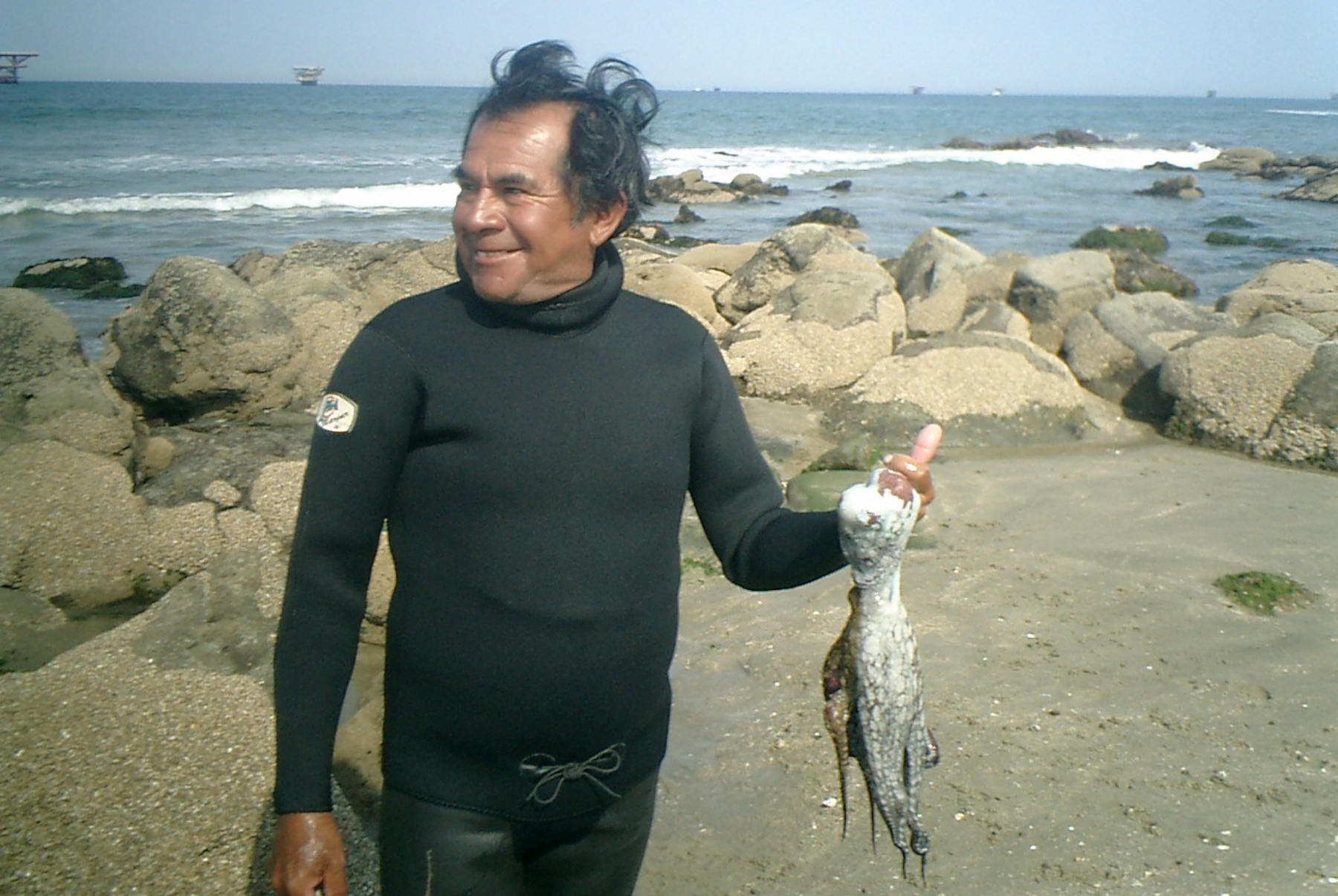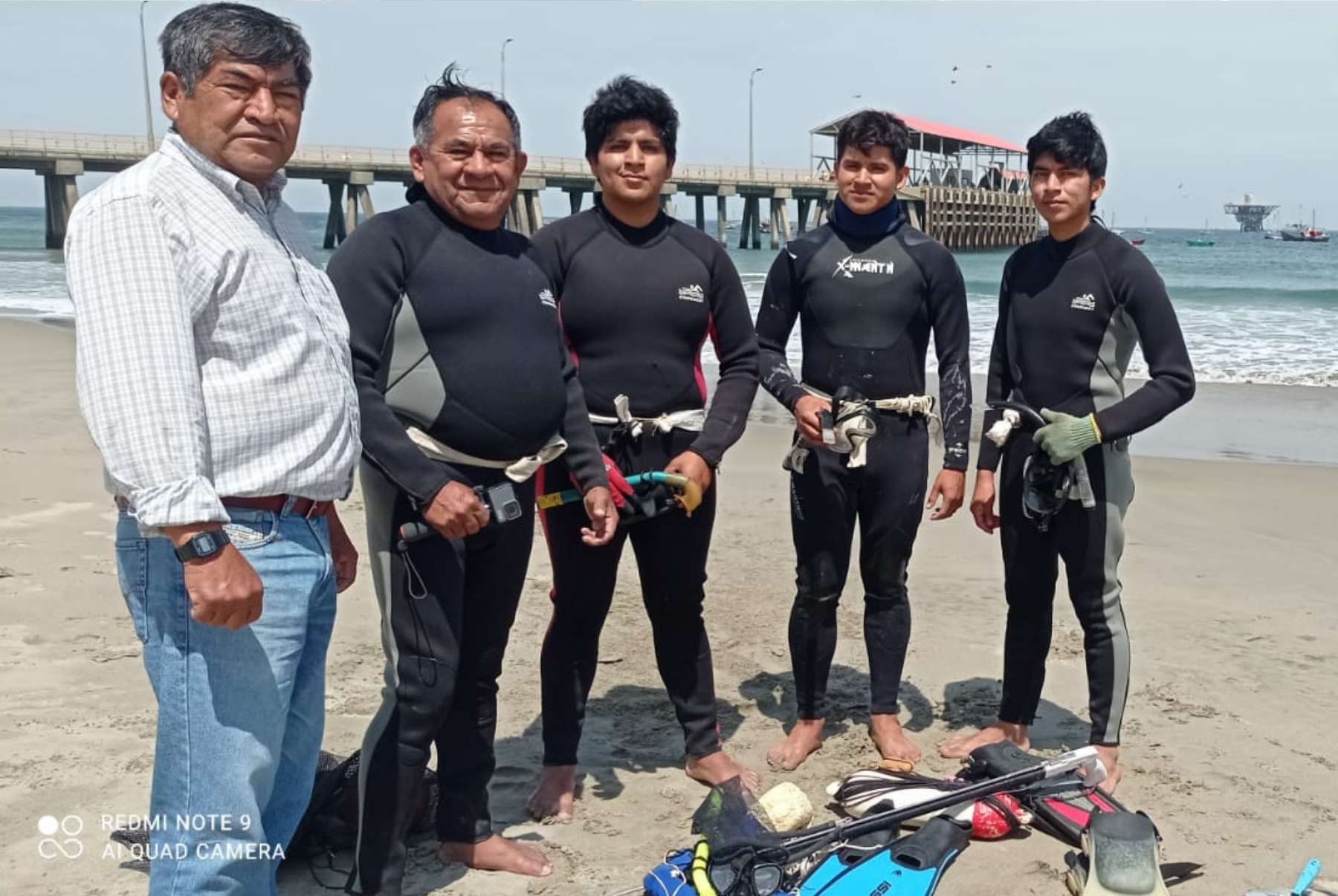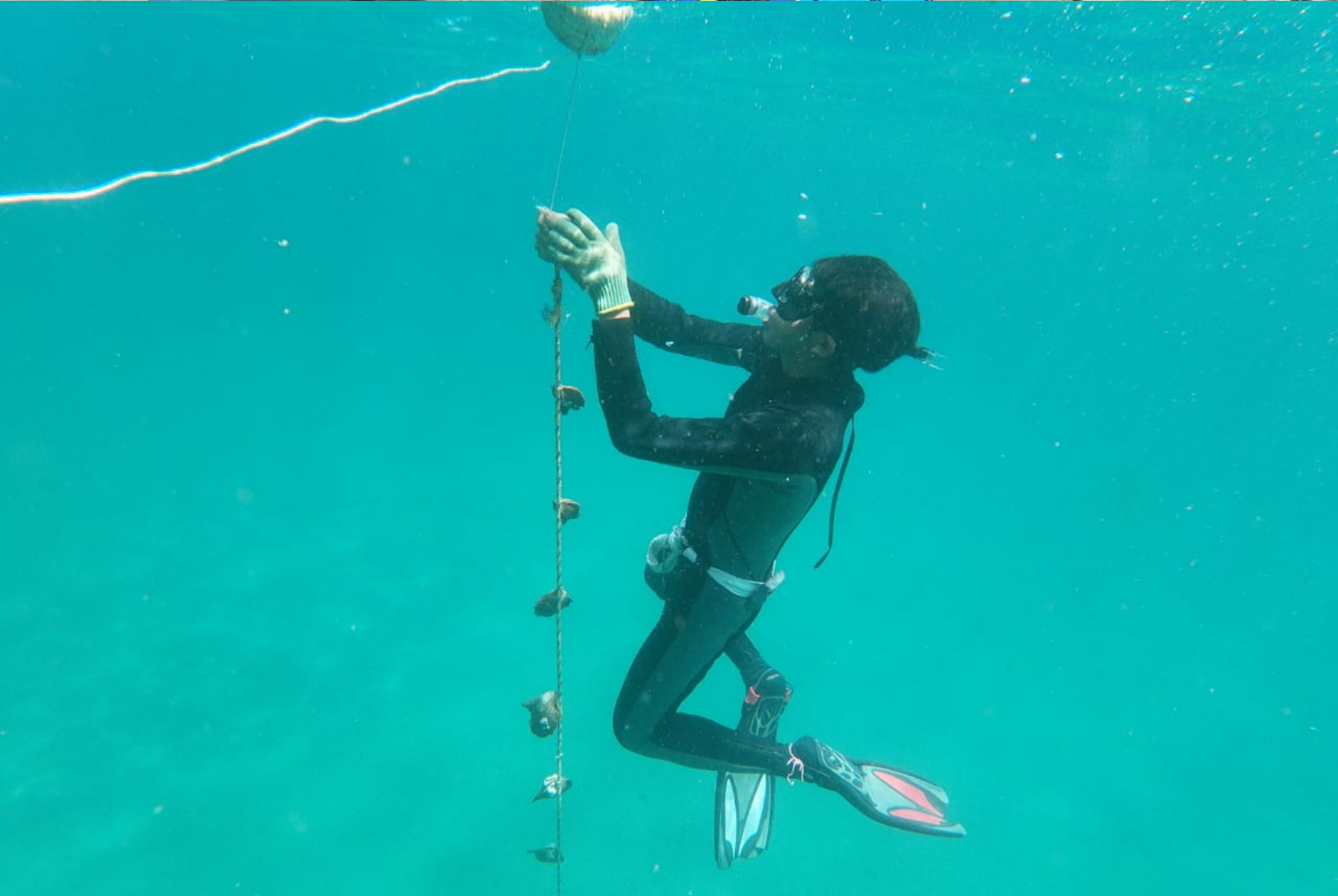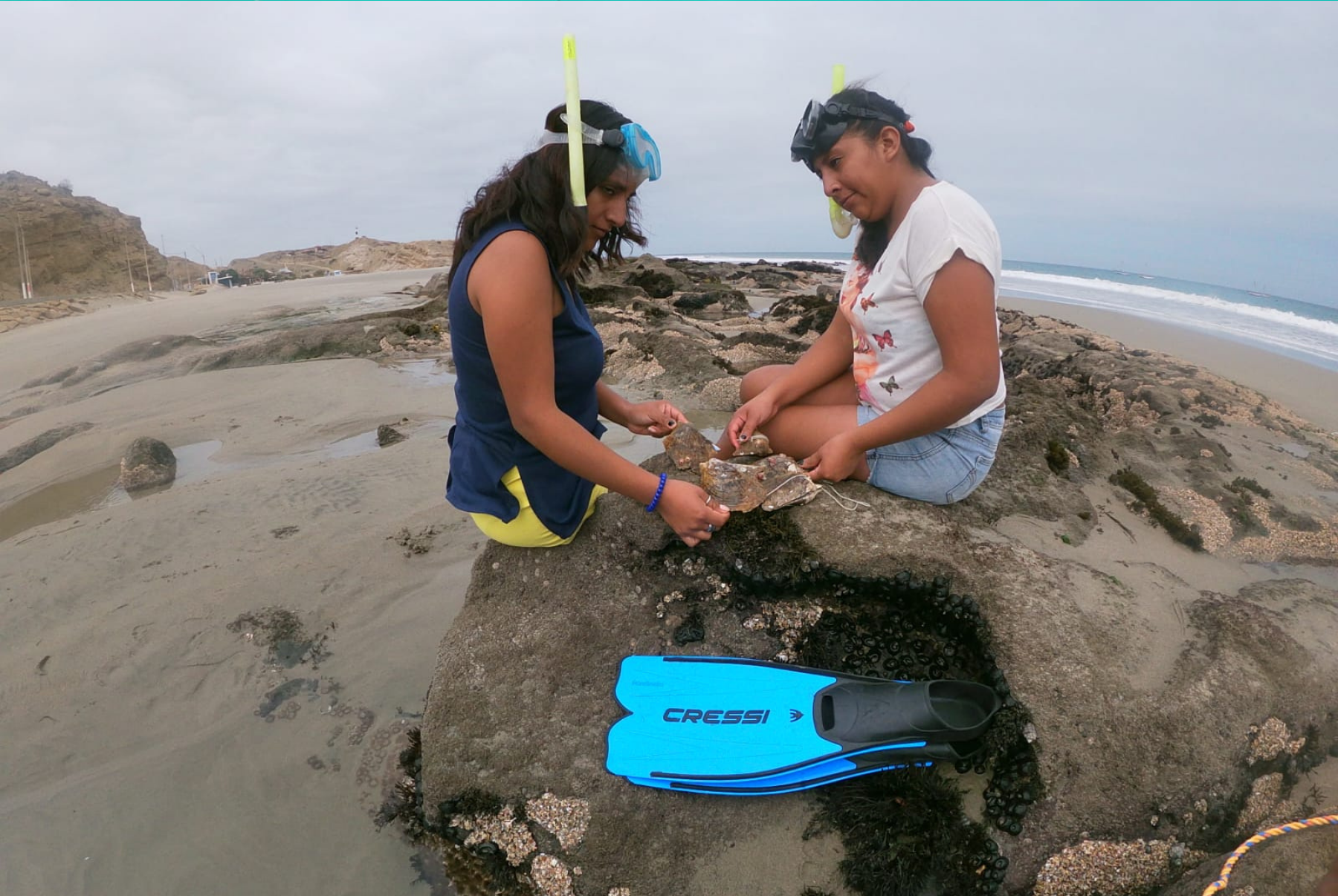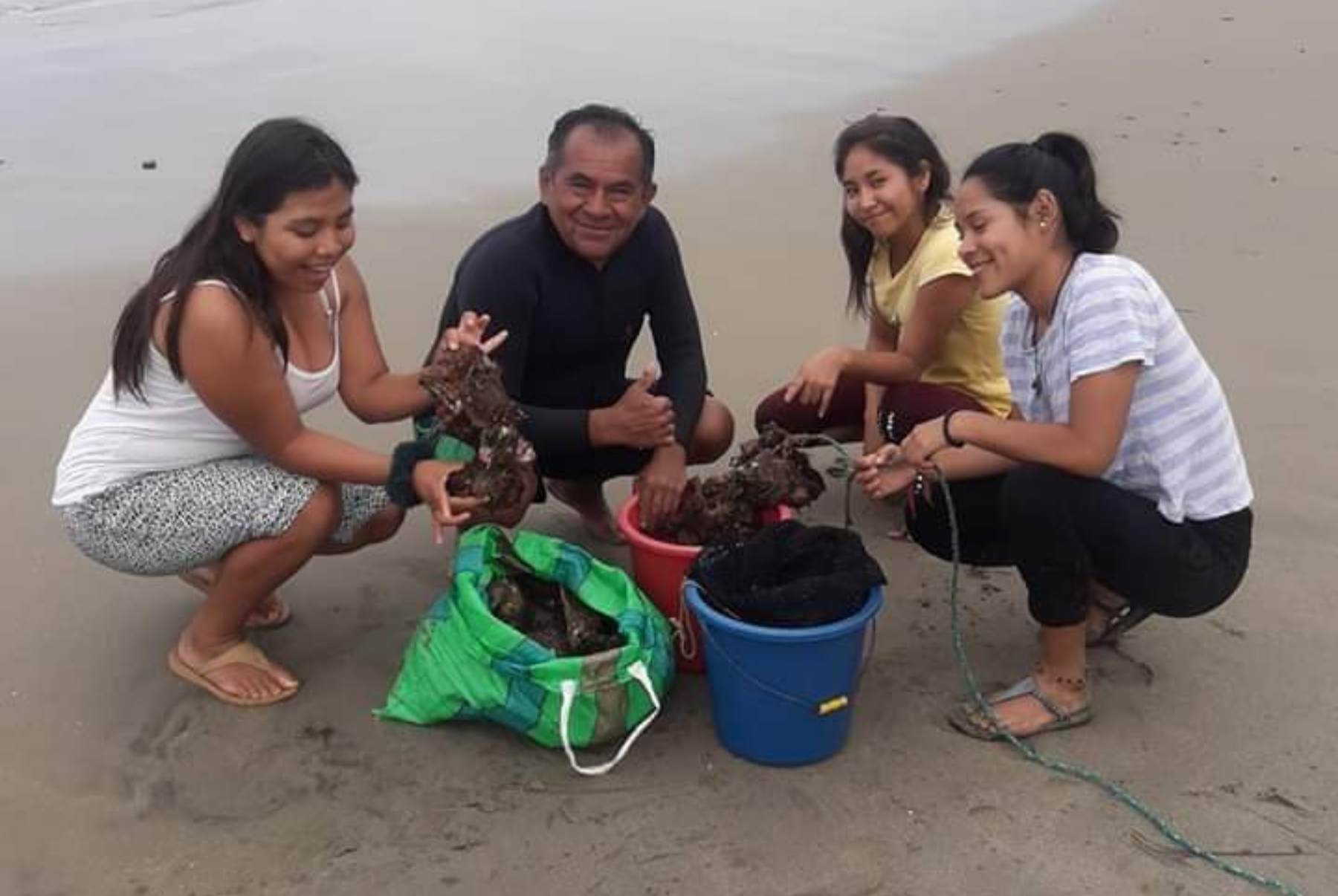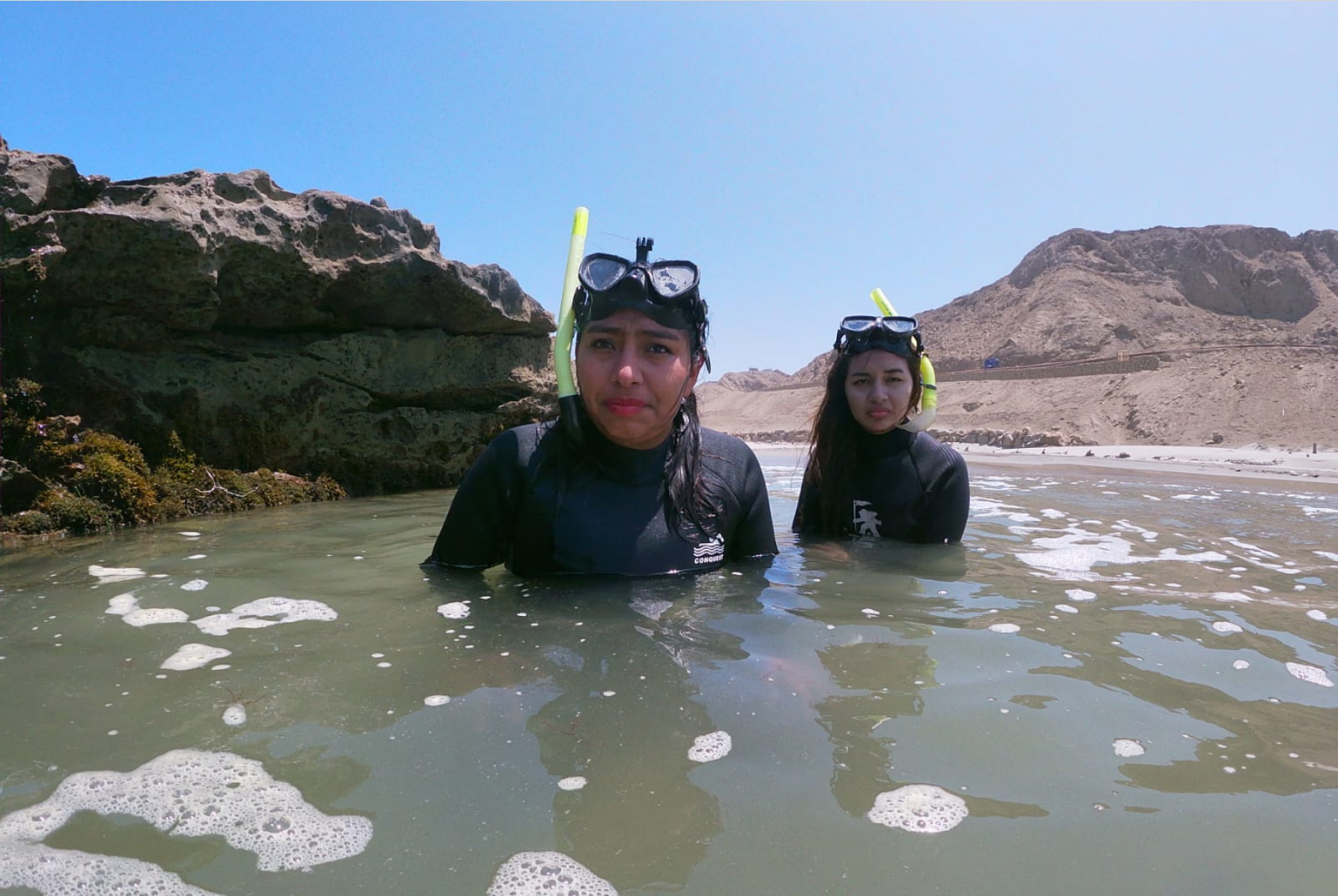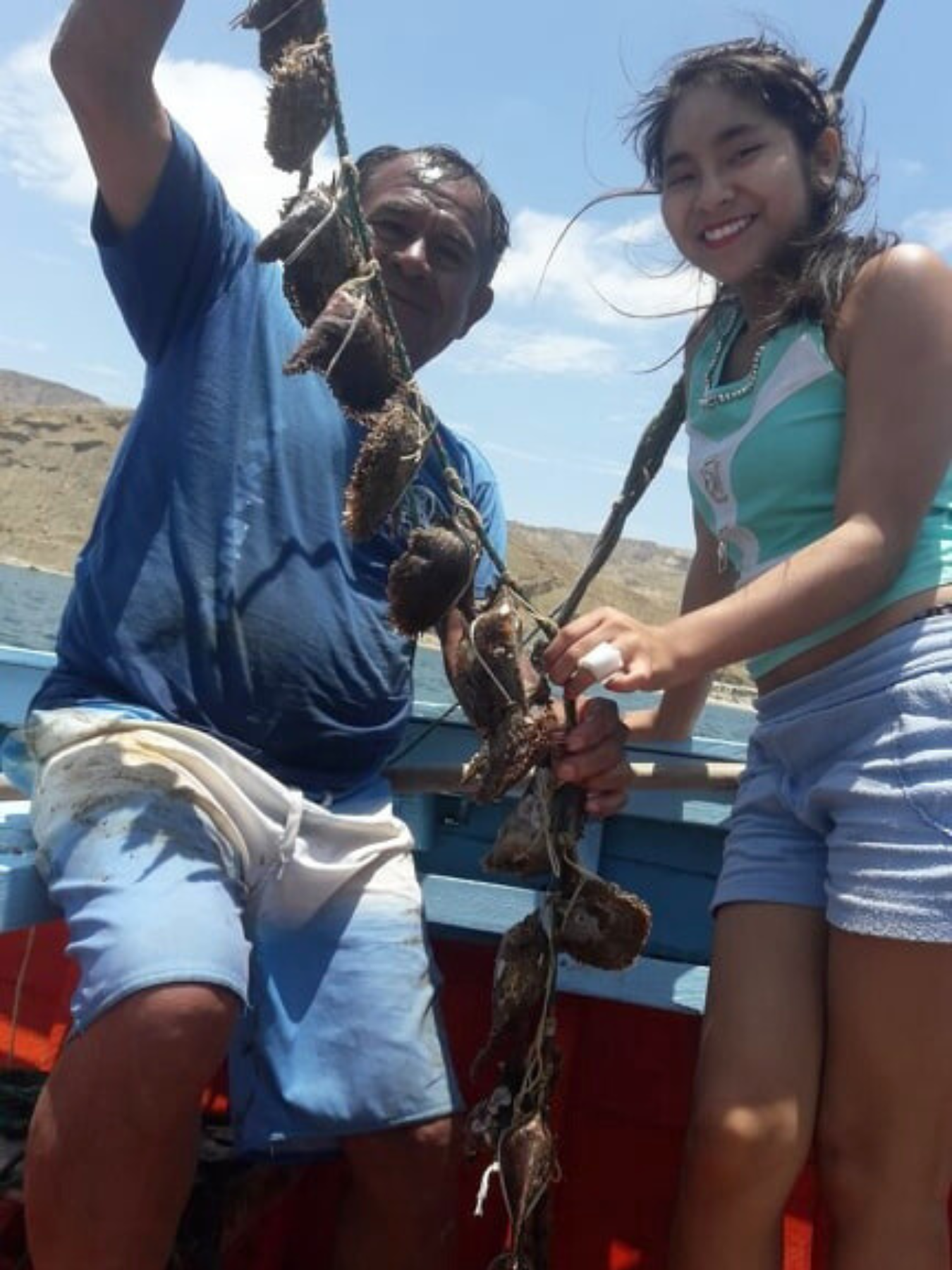Farming Pearls in Cabo Blanco
Baltazar is a fisherman and artisanal diver from Cabo Blanco in northern Peru, a community inhabited and animated by artisanal fishermen. His life is the sea, and the sea provides him and his family with a livelihood. For Baltazar the call of the sea is very strong—he cannot let much time pass between one dive and the next. One could almost say that Baltazar has gills. That’s why when he was offered the opportunity to study and develop an alternative career, he became a fisheries engineer in order to stay close to the coast.
Baltazar has noticed something odd during his dives over the past 10 years. His fishing and hunting activities, as well as those of his fellow fishers, has become less and less productive. The waters of Cabo Blanco, once a famous destination for sport fishing due to the enormous size of the catch that could be obtained, have slowly but surely ceased to proffer their treasures. The reduction in fish populations have been caused by extreme weather phenomena and the depletion of fishery resources by other fishing activities from neighboring communities and international fleets. In coastal communities when livelihoods are lost, elders stop practicing their art, young people decide to leave, and the soul of a community slowly dies out.
For Baltazar, this scenario was unacceptable, and while scanning the seabed for a solution, he found another treasure that the ocean gives us that he realized could be a source of education and livelihood for its people, real jewel: pearls.


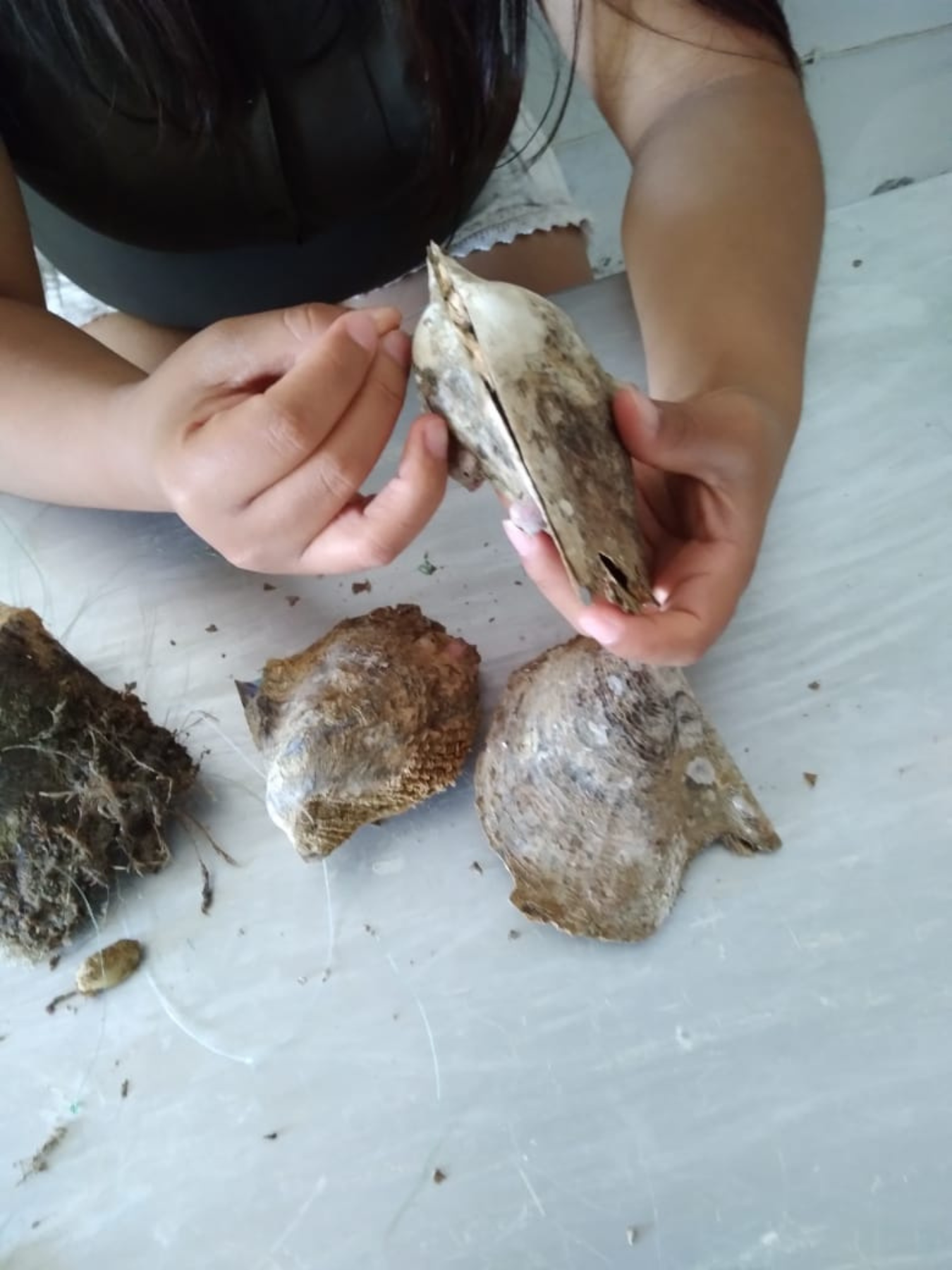
![[Click the arrow to the right to scroll through the slideshow]](https://lexiconoffood.com/wp-content/uploads/2023/03/1-12.png)
